The United States, with its diverse landscapes spanning desert canyons, snow-capped mountains, raging rivers, and vast coastlines, serves as the ultimate playground for extreme sports enthusiasts. From the dizzying heights of cliff diving to the bone-chilling depths of ice diving, adventure seekers across America are constantly pushing the boundaries of human capability.
These adrenaline-fueled activities aren’t just about the rush—they represent a unique intersection of athletic prowess, mental fortitude, and an intimate connection with nature’s most challenging environments.
Whether you’re an experienced thrill-seeker or simply curious about the extreme sports landscape across the country, this comprehensive guide explores the most heart-pounding activities from coast to coast, highlighting what makes each sport unique and where to experience them at their best.
Skydiving in Arizona: Desert Freefall
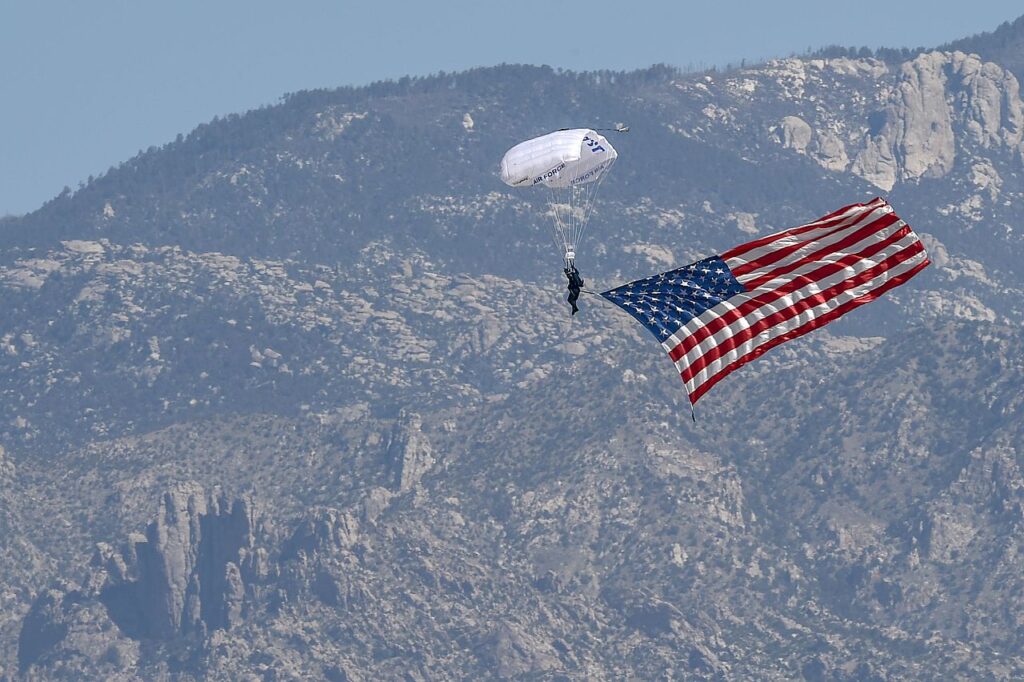
Arizona’s clear skies and breathtaking desert landscapes make it one of America’s premier skydiving destinations, with Skydive Arizona in Eloy standing as the largest drop zone in the world. Jumpers experience an unparalleled 120+ mph freefall with panoramic views of the Sonoran Desert, the distant mountains, and the patchwork of agricultural fields below. What sets Arizona skydiving apart is the combination of nearly year-round perfect weather conditions, state-of-the-art facilities, and the surreal sensation of floating above the desert’s otherworldly terrain.
For first-timers, tandem jumps with certified instructors provide accessibility to this extreme sport, while experienced skydivers can participate in formation diving events that sometimes break world records with hundreds of participants linked in midair.
Big Wave Surfing in Hawaii: Challenging the Pacific Giants
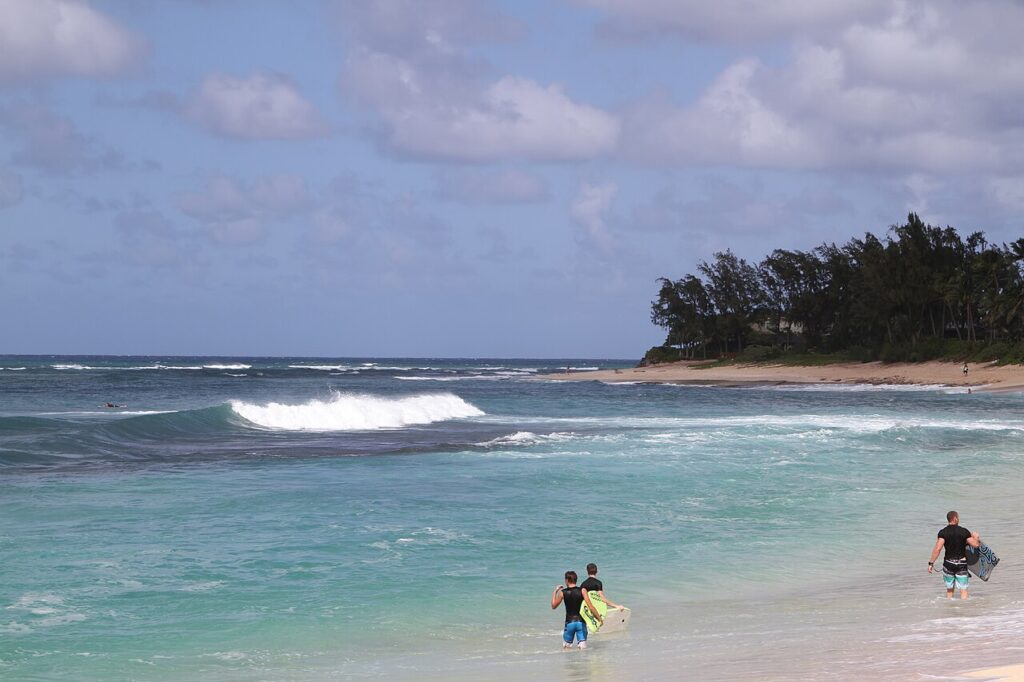
Hawaii’s North Shore on Oahu has earned legendary status in the surfing world, particularly at Pipeline and Waimea Bay where winter swells can generate waves reaching 30 feet or higher. These monster waves create hollow barrels that skilled surfers navigate with a combination of technical expertise, physical strength, and intimate knowledge of ocean behavior. What distinguishes Hawaiian big wave surfing from other extreme water sports is the raw power of these waves—the weight of water in a large breaking wave can exceed 400 tons, creating both the perfect ride and potentially life-threatening conditions.
The big wave season runs primarily from November through February, drawing elite surfers from around the world who respect the ancient Hawaiian traditions while pushing the limits of modern surfing. Local surf culture emphasizes proper etiquette and respect for the ocean’s power, creating a unique community where accomplishments are measured not just by rides completed but by understanding shown to the sea.
Rock Climbing in Yosemite: Conquering El Capitan
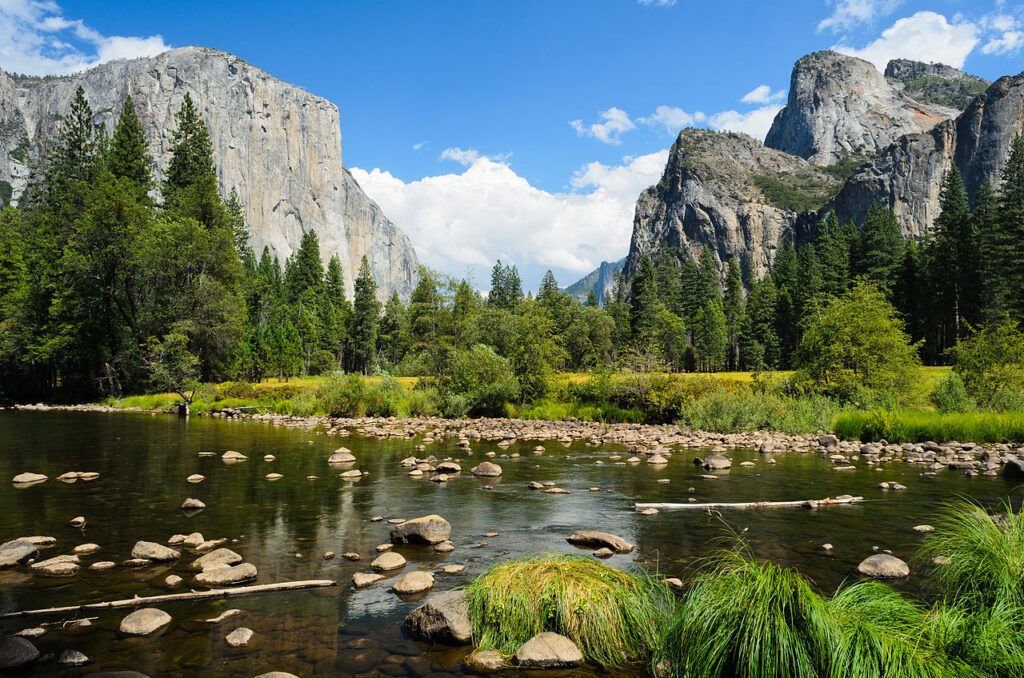
Yosemite National Park in California offers what many consider the ultimate test in traditional rock climbing: the sheer granite face of El Capitan rising nearly 3,000 vertical feet from the valley floor. This iconic climbing destination features over 100 routes of varying difficulty, with “The Nose” being perhaps the most famous big wall climb in the world. What makes Yosemite climbing uniquely challenging is the combination of vertical exposure, technical difficulty, and the commitment required for multi-day ascents where climbers sleep on portable ledges suspended hundreds of feet above the ground.
The climbing culture in Yosemite has deep historical roots going back to the 1950s, with generations of climbers developing techniques and equipment specifically for these massive walls. Beyond El Capitan, climbers can test their skills on other formations like Half Dome, Sentinel Rock, and countless other routes that blend technical difficulty with breathtaking natural beauty.
Whitewater Kayaking in West Virginia: Navigating the Gauley River
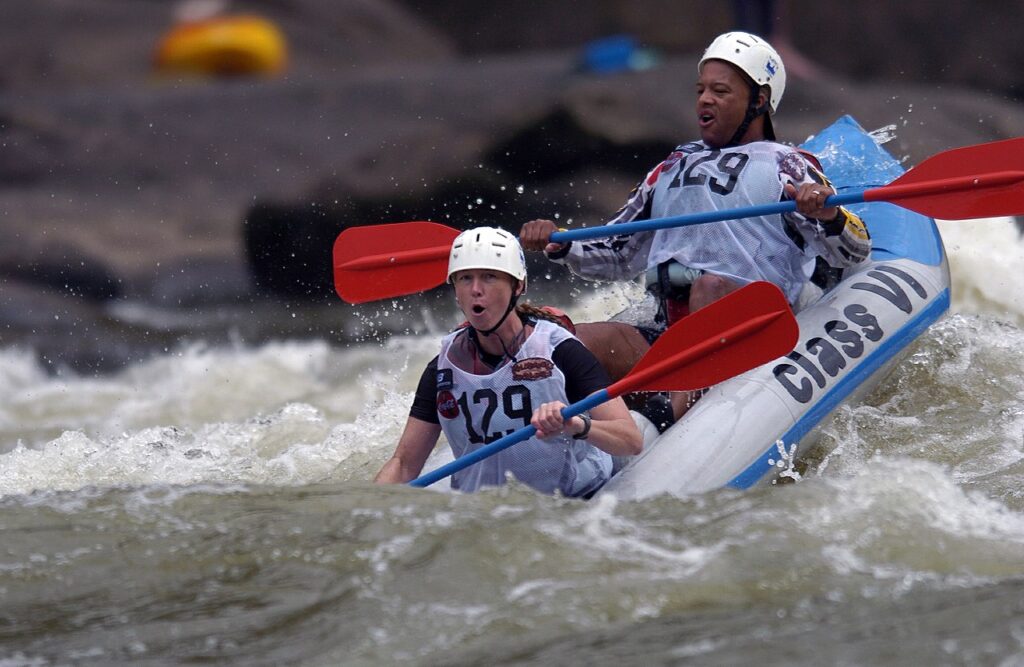
The Gauley River in West Virginia transforms into a world-class whitewater destination during its annual fall release, when controlled water discharges from the Summersville Dam create consistent Class V rapids that attract elite kayakers from across the globe. This 25-mile stretch of river features over 100 rapids, including infamous challenges like “Pillow Rock,” “Lost Paddle,” and “Sweet’s Falls” that require precise boat control, split-second decision making, and a healthy respect for hydraulic forces.
What distinguishes the Gauley from other whitewater destinations is the technical complexity of its rapids combined with the predictable water releases that guarantee optimal conditions during “Gauley Season” in September and October. The surrounding Appalachian landscape adds to the experience, with steep gorges and forested hillsides creating a stunning backdrop for this intense river challenge. Beyond the extreme upper section, the river offers options for various skill levels, making it both a testing ground for experts and a progression pathway for developing paddlers.
Ice Climbing in Alaska: Scaling Frozen Waterfalls
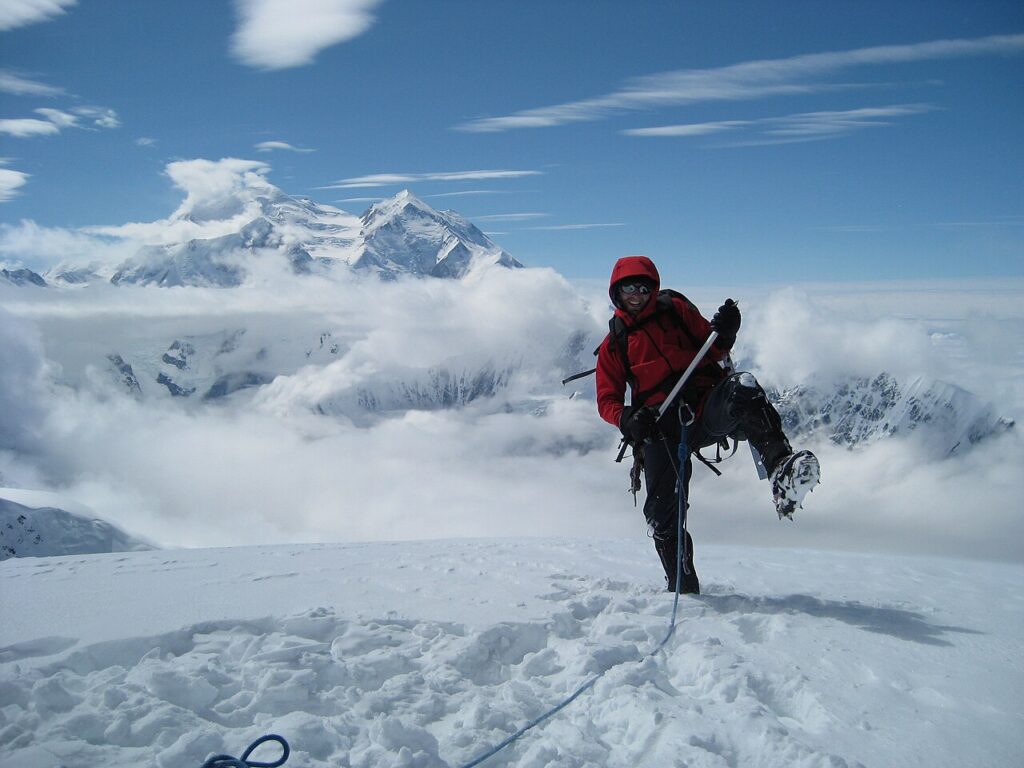
Alaska’s Valdez region has earned its reputation as “the land of frozen waterfalls,” offering ice climbers some of the most challenging vertical ice formations in North America. During the winter months, Keystone Canyon transforms into a paradise of blue ice columns and curtains where climbers use specialized equipment including crampons, ice axes, and protection screws to ascend these ephemeral sculptures. What makes Alaskan ice climbing exceptionally challenging is the combination of extreme cold, technical difficulty, and the remote backcountry setting that demands self-sufficiency and risk management.
The quality of ice varies with temperature fluctuations, creating a dynamic environment where routes literally change shape throughout the season. Beyond the physical challenge, successful ice climbing in Alaska requires mental fortitude to manage fear while making precise movements on an inherently unstable medium. The reward for those who master these skills is the privilege of scaling formations that exist only briefly each year before melting back into flowing water.
Mountain Biking in Utah: Navigating the Slickrock Trails
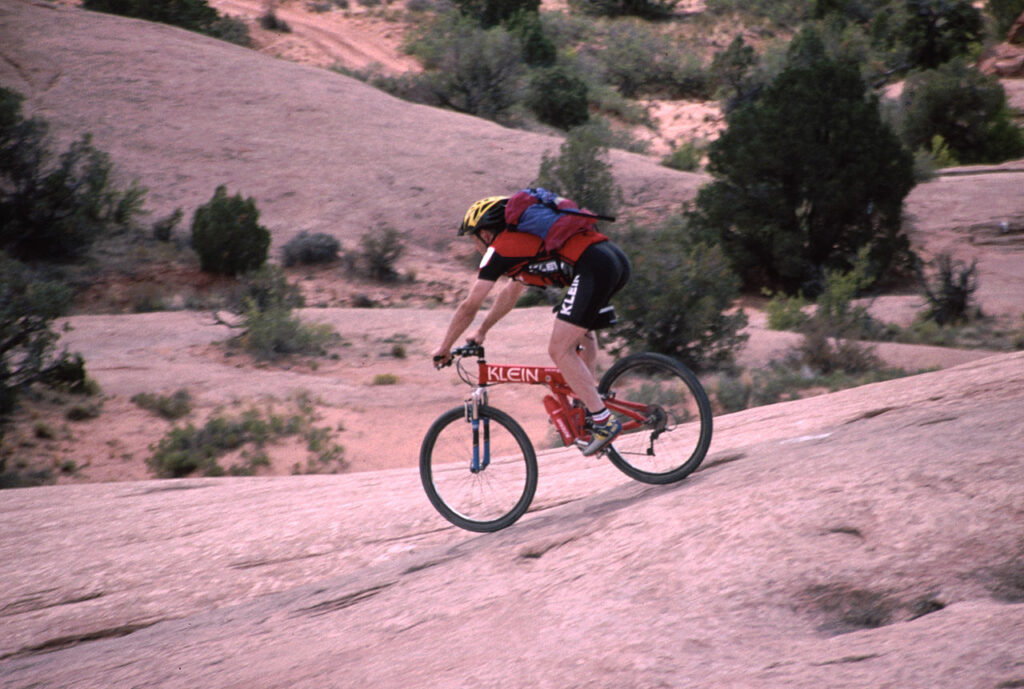
Moab, Utah stands as the epicenter of extreme mountain biking in America, with its iconic Slickrock Trail offering a surreal riding experience across ancient Navajo sandstone formations that provide unprecedented traction for knobby tires. This 10.5-mile technical loop features steep climbs, heart-stopping descents, and natural features that seem purpose-built for testing a rider’s technical skills and nerve. What distinguishes Moab mountain biking is the otherworldly landscape—riders navigate across petrified sand dunes and along the edges of deep canyons with views extending for miles across the Colorado Plateau.
Beyond Slickrock, the region offers additional challenges like the Porcupine Rim Trail with its 2,700-foot descent and the Portal Trail with exposure that demands absolute focus and control. The riding season extends through spring and fall, with summer months often becoming too hot for safe riding, creating a rhythm of migration as riders from across the country time their visits to experience these unique trails in optimal conditions.
Wingsuit Flying in California: Human Flight Over Yosemite
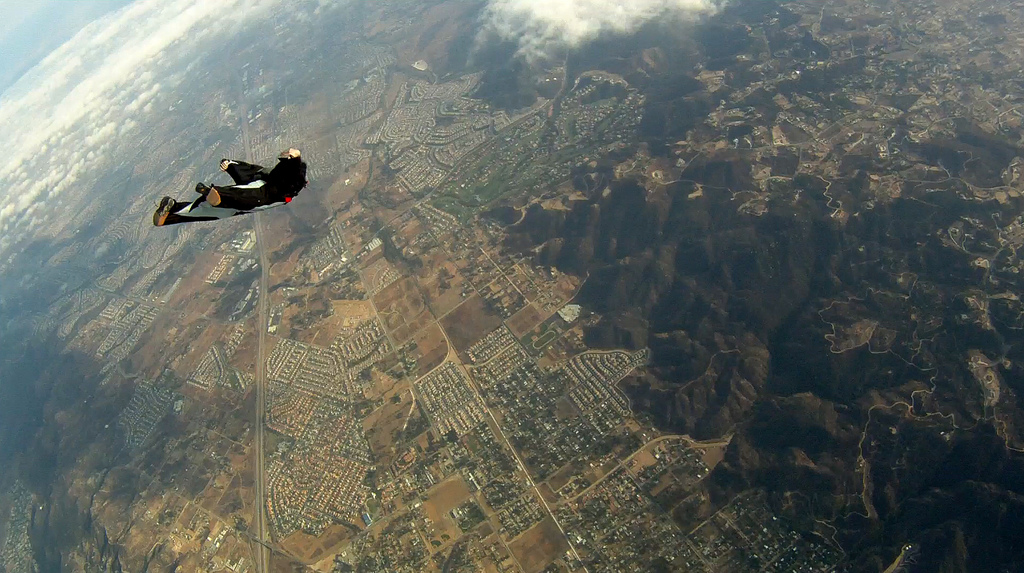
Wingsuit flying represents perhaps the closest humans can come to achieving true flight, with Yosemite National Park serving as one of the sport’s most spectacular—and restricted—environments. Experienced jumpers equipped with specialized suits that create lift between the arms and legs launch from designated exit points on formations like El Capitan, reaching horizontal speeds over 100 mph while navigating through the valley’s airspace. What makes wingsuit flying the ultimate extreme sport is the combination of speed, precision requirements, and the minimal margin for error—jumpers must maintain perfect body position while calculating glide ratios that allow them to clear obstacles before deploying their parachutes.
Legal wingsuit flying in Yosemite requires special permissions and extensive experience, with most jumpers accumulating hundreds or thousands of traditional skydiving jumps before attempting this discipline. The reward for these elite athletes is a perspective of the landscape that few will ever experience—soaring like a bird through one of America’s most iconic natural cathedrals.
Cave Diving in Florida: Exploring Underwater Labyrinths
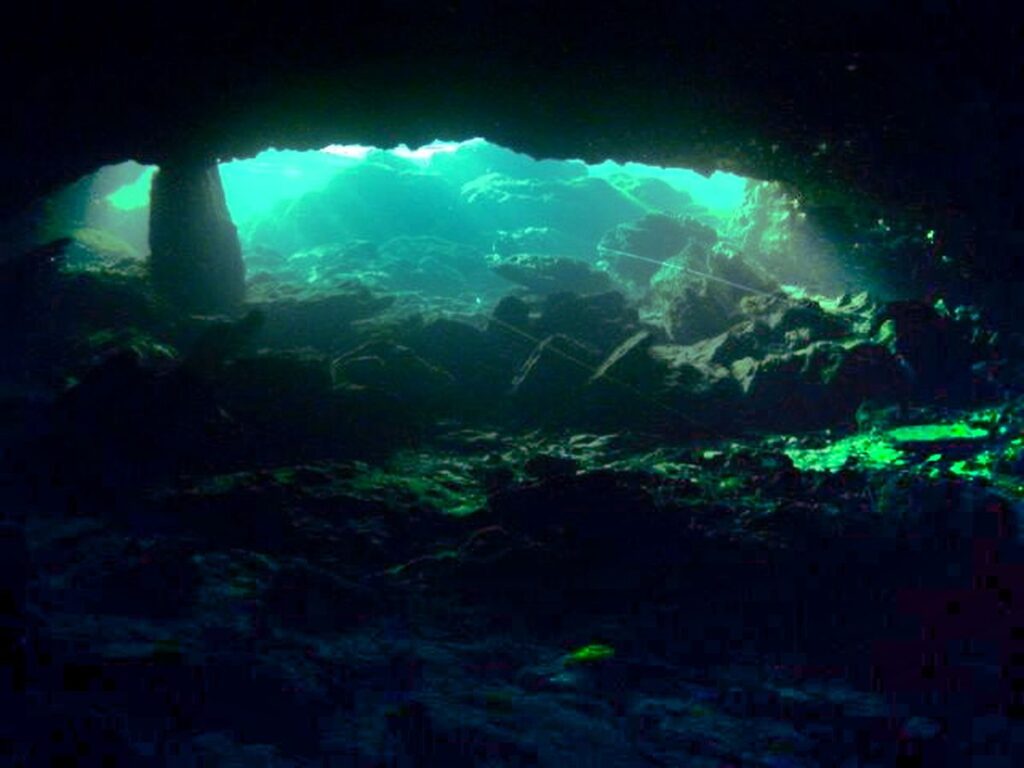
Florida’s extensive limestone bedrock has created one of the world’s most complex underwater cave systems, with crystal-clear springs serving as portals to submerged passageways that extend for miles beneath the surface. Cave diving in locations like Ginnie Springs and the Peacock Springs Cave System requires specialized training, redundant equipment configurations, and meticulous planning to navigate environments where a direct path to the surface isn’t available. What distinguishes cave diving from other underwater activities is the three-dimensional maze-like environment where divers must maintain perfect buoyancy control while managing limited gas supplies and following guide lines that prevent disorientation.
The reward for properly trained cave divers is access to prehistoric geological formations, unique ecosystems, and archaeological sites preserved in environments that have remained unchanged for millennia. Florida’s consistent water temperatures and exceptional visibility make year-round diving possible, though seasonal rainfall can affect water clarity at certain sites.
Kiteboarding in the Outer Banks: Harnessing Hurricane Winds
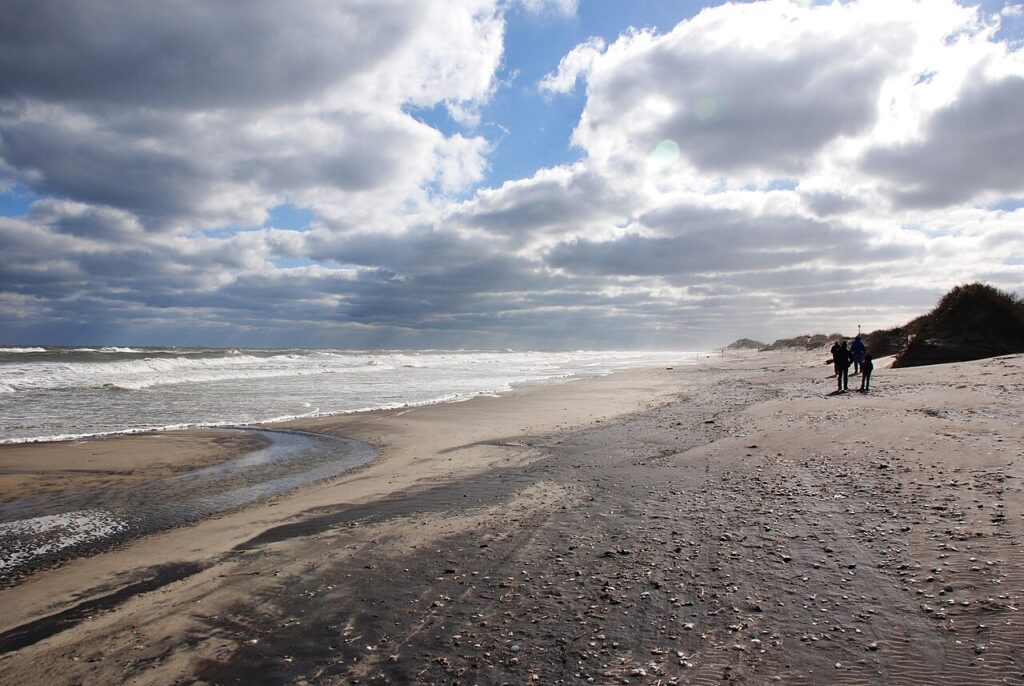
North Carolina’s Outer Banks has established itself as the kiteboarding capital of the East Coast, with consistent wind patterns, shallow sound-side waters, and miles of undeveloped shoreline creating ideal conditions for this dynamic water sport. Advanced kiteboarders harness the power of 20+ knot winds using controllable kites spanning 5-15 meters, propelling themselves across the water and launching up to 40 feet in the air during jumps and technical tricks. What makes Outer Banks kiteboarding uniquely challenging is the variable weather patterns, particularly during hurricane season when approaching storms can generate exceptional wind conditions that experienced riders specifically seek out.
The long, narrow islands create a perfect training ground with the protected Pamlico Sound offering flat water for freestyle riding while the Atlantic side provides wave riding opportunities for those seeking additional challenges. Several world-class kiteboarding schools and a robust local community have developed around spots like Cape Hatteras and Rodanthe, making this region not just a destination for experts but also an accessible entry point for newcomers to the sport.
Free Soloing in Colorado: Climbing Without Ropes
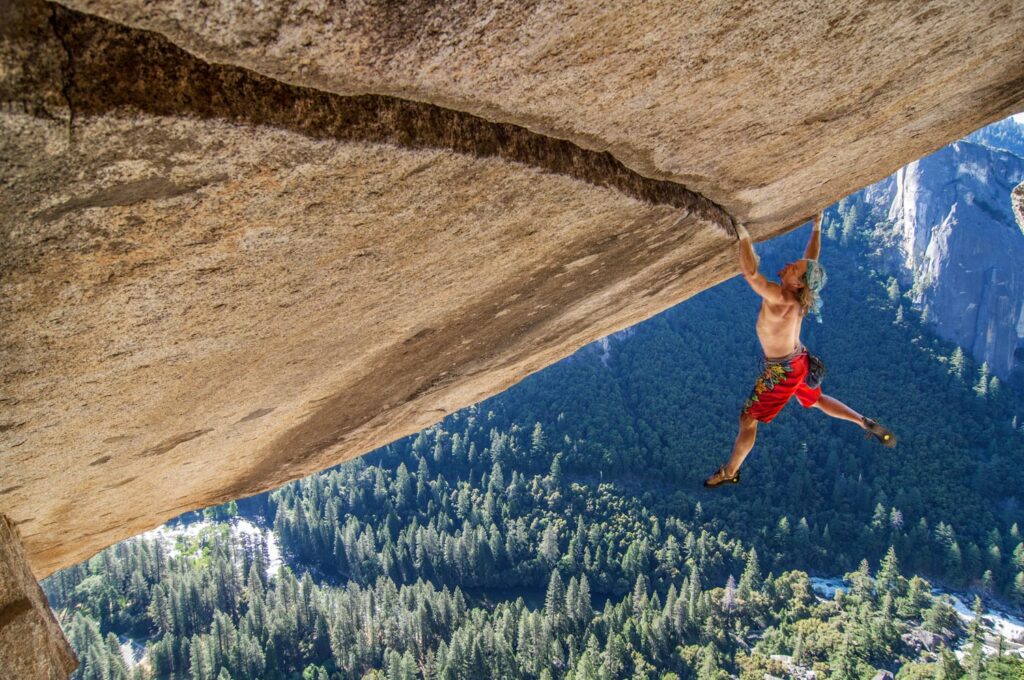
Free soloing—climbing without ropes or protective equipment—represents perhaps the purest and most mentally demanding form of rock climbing, with Colorado’s Eldorado Canyon and the Flatirons near Boulder offering classic routes for this ultimate expression of climbing commitment. Elite free soloists ascend hundreds of feet with nothing but climbing shoes and chalk, knowing that a single mistake could be fatal.
What distinguishes free soloing from other extreme sports is the perfect balance of physical capability and psychological control required—practitioners must operate well within their technical limits while maintaining absolute focus and emotional stability throughout the climb.
The Colorado climbing community has a long history of legendary free soloists who have pioneered this approach on the state’s distinctive sandstone and granite formations, though the activity remains controversial even among experienced climbers. For the tiny minority of climbers who engage in this practice, the experience offers an unparalleled state of flow and connection with the rock that transcends conventional climbing experiences.
Heli-Skiing in Alaska: Accessing Untouched Powder
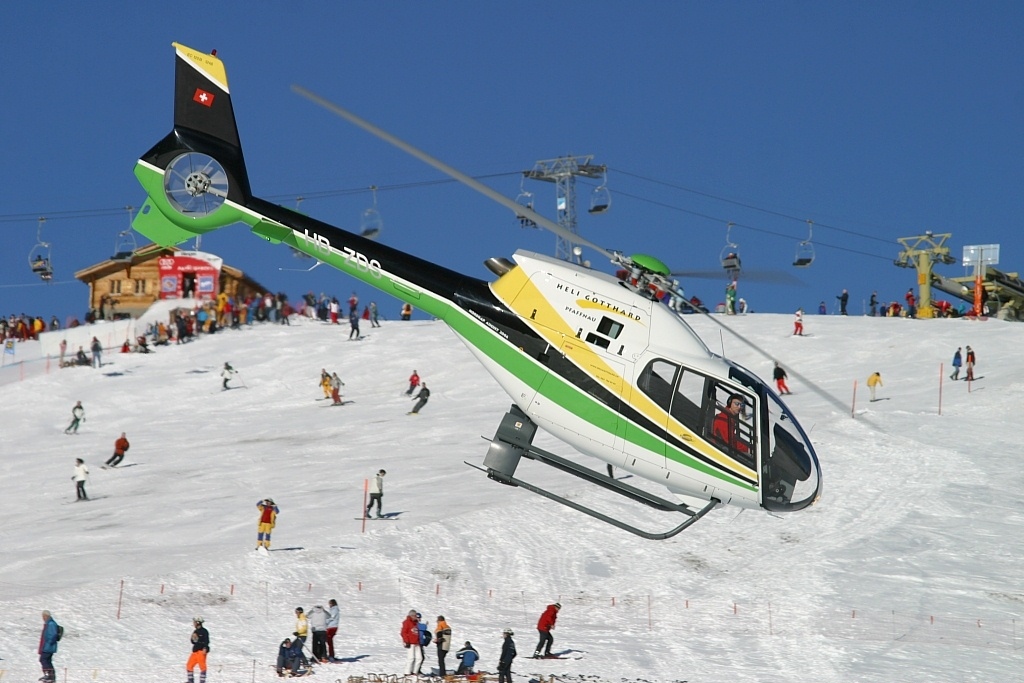
Alaska’s Chugach Mountains near Valdez have become synonymous with the ultimate heli-skiing experience, offering intrepid skiers and snowboarders access to steep, powder-filled terrain that would be inaccessible by conventional means. Helicopters deposit small groups of advanced riders on remote ridgelines above descents that can exceed 4,000 vertical feet, with slopes averaging 40 degrees or steeper through terrain that has never seen grooming equipment.
What makes Alaskan heli-skiing extraordinarily challenging is the combination of extreme pitch, maritime snowpack characteristics, and the remote setting where self-rescue skills become essential risk management tools.
The maritime climate delivers annual snowfall exceeding 600 inches, creating the deep powder conditions that allow experts to tackle lines that would be unskiable in less forgiving snow conditions. The heli-skiing season typically runs from February through April, with operations carefully monitoring avalanche conditions and weather patterns to maximize both safety and the quality of the skiing experience in this breathtaking wilderness environment.
Cliff Diving in Hawaii: Plunging from Black Rock
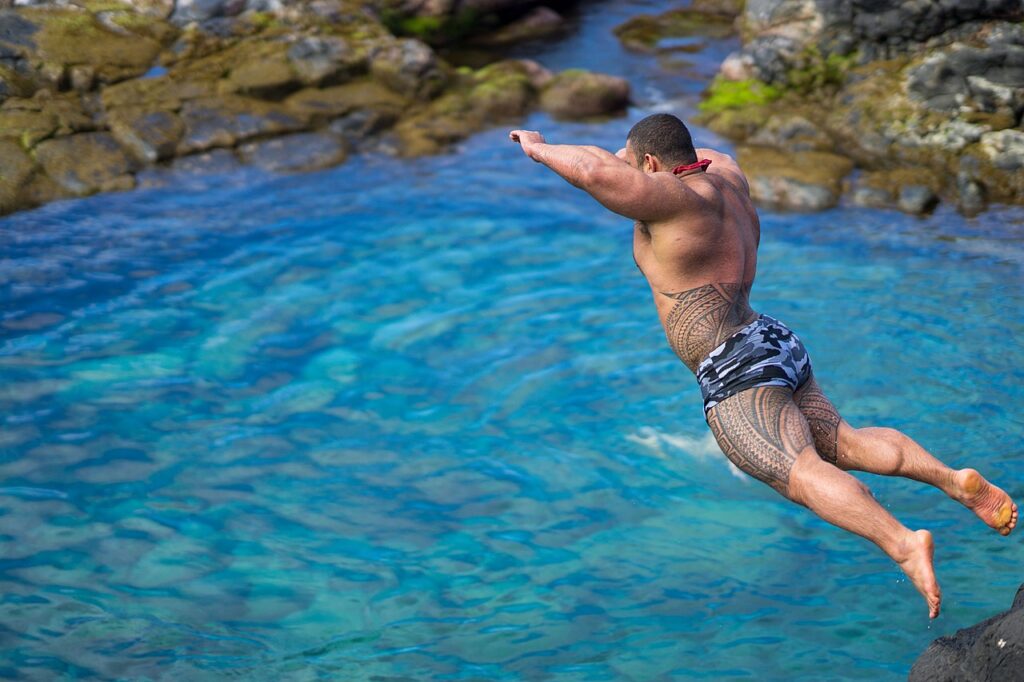
Cliff diving combines the technical precision of diving with the heart-stopping thrill of height, with Hawaii’s volcanic coastlines offering some of America’s most iconic jumping locations, including the 40-foot Black Rock on Maui’s Kaanapali Beach. Expert cliff divers analyze water depth, entry angles, and potential hazards before executing precise dives that allow safe entry into sometimes narrow landing zones.
What distinguishes cliff diving from other extreme sports is the brief but intense nature of the activity—jumpers experience only seconds of freefall but must maintain perfect body position throughout to prevent injury upon water impact, which can exceed 50 mph from higher platforms.
Hawaiian cliff diving carries cultural significance beyond the adrenaline rush, with traditional ceremonies at sites like Ka Lae (South Point) on the Big Island connecting modern practitioners to ancient traditions. While organized competitions exist, much of Hawaiian cliff diving maintains an informal, community-based approach where local knowledge about tide conditions, underwater obstacles, and proper technique is passed down through generations of islanders and visiting adventure seekers.
Base Jumping in Idaho: Leaping from the Perrine Bridge
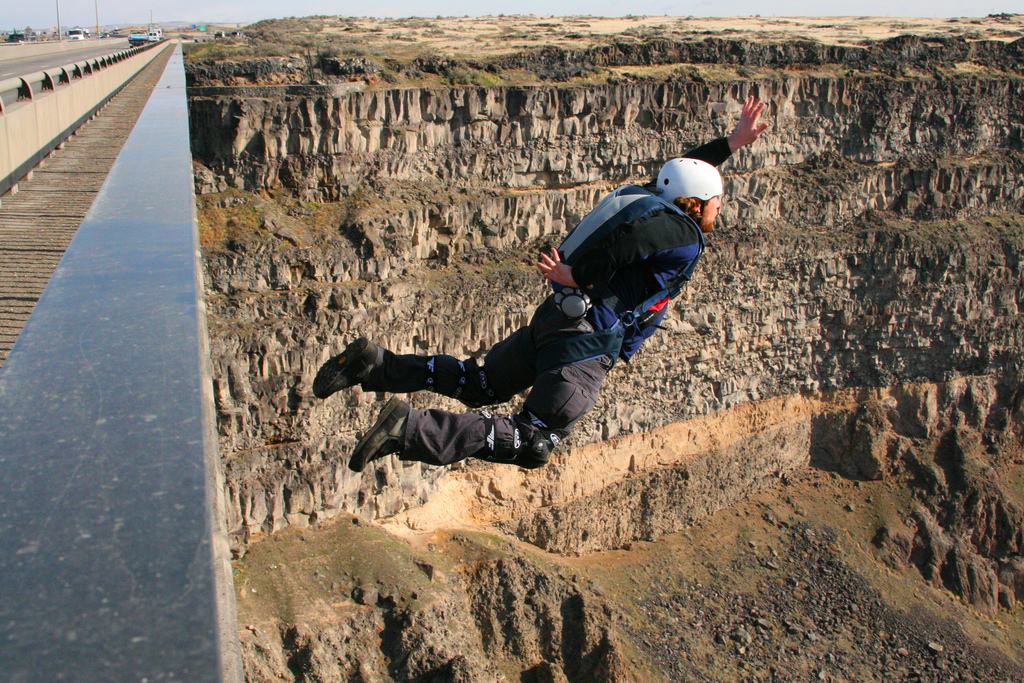
Idaho’s Perrine Bridge spanning the Snake River Canyon represents a unique opportunity in the American BASE jumping landscape—it’s one of the few structures in the country where this extreme activity is legally permitted year-round without special authorization. Standing 486 feet above the river, the bridge attracts jumpers from around the world who deploy specialized parachutes designed for low-altitude openings after leaping from the fixed structure. What makes BASE jumping (Building, Antenna, Span, Earth) particularly extreme is the minimal altitude available for deployment and the proximity to solid objects during the jump and canopy flight.
The legal status of the Perrine Bridge has created a unique community where experienced jumpers mentor newcomers in the specific techniques required for safe BASE jumping, though most participants have hundreds of traditional skydives before attempting their first bridge jump. The dramatic canyon setting provides not only technical challenges but also spectacular views of the surrounding landscape during the brief but intense freefall and canopy flight to the landing area along the river’s edge.
Conclusion
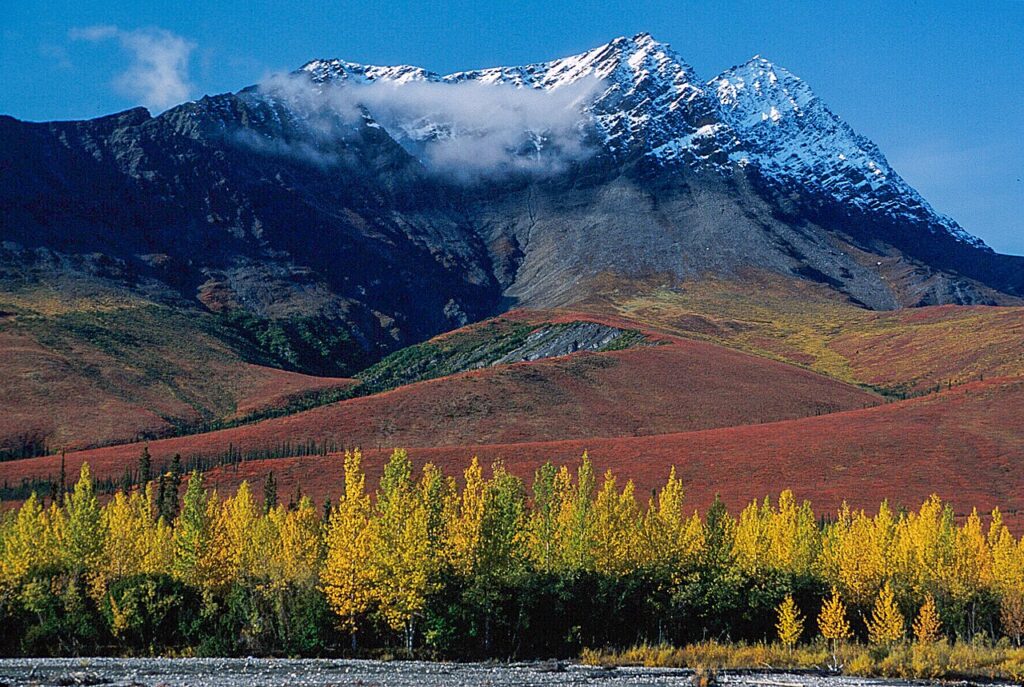
From the sunbaked deserts of Arizona to the snow-covered peaks of Alaska, America’s varied terrain provides the perfect backdrop for those seeking the ultimate adventure. These extreme sports represent more than just adrenaline addiction—they embody a philosophy of living deliberately, facing fear directly, and developing an intimate relationship with the natural world at its most powerful and unforgiving.
While these activities undeniably carry significant risks, the communities built around them have developed sophisticated safety protocols, training methodologies, and mentorship traditions that help participants manage these dangers.
For those drawn to these pursuits, the rewards extend beyond the momentary thrill to include profound personal growth, lifelong friendships forged through shared challenge, and experiences of natural beauty accessed only through mastery of these specialized skills. Whether you choose to participate or simply appreciate from afar, these extreme sports showcase human potential at its most daring and inspired.

